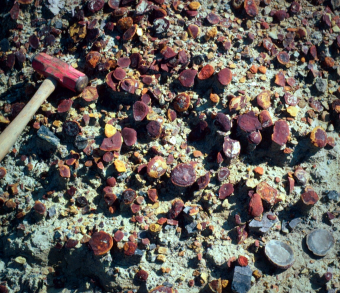
Concretions
July 21, 2025
Contact: Eric Stann, StannE@missouri.edu
Photos courtesy Gordon Baird and Jim Schiffbauer
More than 300 million years ago, during the Carboniferous Period, much of northern Illinois outside Chicago — including what is now the Mazon Creek (“muh-ZAHN”) fossil site — was alive with ancient creatures thriving in lush, tropical swamps, river deltas and shallow seas.
Now, researchers at the University of Missouri’s College of Arts and Science are collaborating with geologist Gordon Baird to reanalyze his massive fossil collection from Mazon Creek — currently housed at the Field Museum in Chicago — which includes 300,000 siderite concretions from around 350 different localities.
The Mazon Creek fossil beds are renowned for their exceptional preservation of both plants and animals, made possible by their unique geological setting. The fossils are encased in siderite — an iron carbonate mineral — forming abundant concretions that have become a treasure trove for scientists and avocational fossil hunters alike.
Thanks to decades of research at Mazon Creek, including foundational fieldwork by Baird and colleagues in the late 1970s, we now have an extraordinary view of life along that ancient coast.